The Quiet Seduction of "Sexy Restaurants"
- Max Collins

- Aug 17
- 5 min read
Updated: Aug 18
Some restaurants make you lower your voice the moment you walk in. Not because it’s formal, but because the room seems to hum at a slower frequency.
My partner and I call them “sexy restaurants,” but the truth is, their power isn’t solely in red velvet chairs or candlelit clichés. It’s in the way the light hovers just so. The way the air feels heavier in the best possible way. The way you notice your sensory comfort before you notice the menu.
These are the spaces which understand that we dine with more than just our mouths in mind.
Lighting That Holds You Close
Sexy restaurants don’t simply dim the lights - they choreograph them. Pools of amber fall exactly where they should: on the table, on the rim of a glass, on the slow curve of a plate. Faces glow softly. Shadows blur. The background disappears into near-darkness, making the moment feel contained, safe, and entirely yours.
It’s less about brightness and more about contrast. Letting the light touch only what you need to see, so everything else becomes suggestion.
In the home we could use layered lighting - table lamps, wall sconces, candles at different heights. Keep bulbs warm (2200–2700K) to create softness. Let the rest of the room fall away into shadow. You’ll find conversation shifts to something more meaningful when the world feels smaller.
The Barbary, Notting Hill, by Archer Humphryes Architects. Photography by Mickael A. Bandassak.
Materiality You Can Feel Without Touching
Walk into one of these spaces and you’ll notice how the materials catch light, or how they don’t.
Deep velvet that drinks it in. Polished brass that flickers it back. Textured walls bring a sense of density. Tables of marble, stone, or dark timber layered into the palette - solid and cool to the touch.
The palette is nearly always fairly low-contrast, favouring tones that don’t shout over one another: inky blues, oxblood reds, soft browns, smoked greys. It’s not just about colour in spaces where you want people to linger - it’s about texture. How things sound underfoot. How they smell. How they age with use.
Choose materials that invite touch: linen, suede, raw silk, leather, plaster. Avoid anything too reflective - glare kills atmosphere. Materials like metals are still valid as long as they are finished softly. Let finishes show patina; the slight softness of wear makes a space feel lived-in, not staged.
The "Sushi Room", Brisbane, by Richards and Spence. Photography by Cieran Murphy.
Scale That Brings You In
In many sexy restaurants, scale is used to create intimacy without awkward isolation. Ceilings may be lower, banquettes may hug the wall, partitions may frame smaller dining zones. Even in large rooms, you feel as though you’ve been given your own corner of a secret little world.
There’s something deeply calming about a space that physically wraps around you. It tells your body you can stop scanning the room. You’re held.
Consider scale not just in furniture, but in ceiling height, curtain drop, even artwork placement. Create zones within open spaces - screens, shelving, low lighting - to give each moment its own enclosure. Think about seating arrangements that feel genuinely conversational, not performative.
The Other Senses
I believe that these restaurants understand that the mood doesn’t just live in what you see. It lives in the faintest background music - never too loud, never too obvious. It lives in scent: a whisper of woodsmoke, orange peel, warm bread. It lives in temperature, often just a degree warmer than the street outside, so the room feels like a refuge.
This is where sensuality really comes in - not in grand gestures, but in layers so subtle you barely notice them, yet you feel them all evening.
Pair lighting and scent intentionally. A candle’s glow is always warmer when the fragrance suits the mood. Keep music low and layered, something with depth but no sharp edges. Let scent come from more than candles: herbs on the table, fresh citrus peel, a wood fire in the open kitchen.
Bottarga, Chelsea, by The Pachamama Group. Photography by Others.
The Pace of the Evening
Perhaps the most seductive thing about these restaurants is the way they manage time. Tables aren’t turned too quickly, music doesn’t rush, and the room seems to carry a rhythm that lets you linger. Courses arrive when conversation dips, not when the kitchen shouts. Even the waiting feels intentional. The evening should unfold like a slow piece of music - measured, layered, unhurried.
This is atmosphere using the intangible element of time, not just the tangible décor. And it’s often the difference between a place that feels memorable and one that simply looks good in photographs.
Don’t over-engineer entertaining. Let meals stretch, let playlists flow gently, let lighting dim gradually as the night deepens. Create spaces that allow people to stay, not just eat, even if tables are needed back - a zone with soft seating and a candle-lit corner for that inevitable “one more glass” won't go amiss.
The Full Experience
Everyone knows that a restaurant is only as good as its washrooms. In these kinds of restaurants, the experience doesn’t pause when you excuse yourself from the table. The best ones know that atmosphere carries through every threshold, right down to the washroom. It’s often where the design gets bolder - mirrors that feel like they belong in a film set, stone basins lit like sculptures, unexpected colours that would feel too heavy in the dining room but here feel deliciously dramatic.
The effect is simple: you never step outside the mood. The intimacy continues. You return to the table with the spell unbroken. Treat powder rooms as opportunities for theatre (do the same for your own guest bathrooms at home). Use deep colour, soft lighting, or a single statement material. A small space can carry drama more gracefully than a large one.
Final Thought
The best sexy restaurants don’t try to seduce us with pompous extravagance. They do it with restraint in the right places. With attention to detail. With an understanding that people relax when they feel sheltered from the rest of the world.
That’s why the food tastes better, the wine feels deeper, the conversation flows longer.
It’s a reminder worth bringing to all our spaces, be that at home or in a commercial setting: a room doesn’t have to shout to make you feel something. Sometimes, the most powerful spaces are the ones that whisper.
For more reflections on design and the quiet theatre of atmosphere, sign up to our weekly KNY Journals Newsletter.










































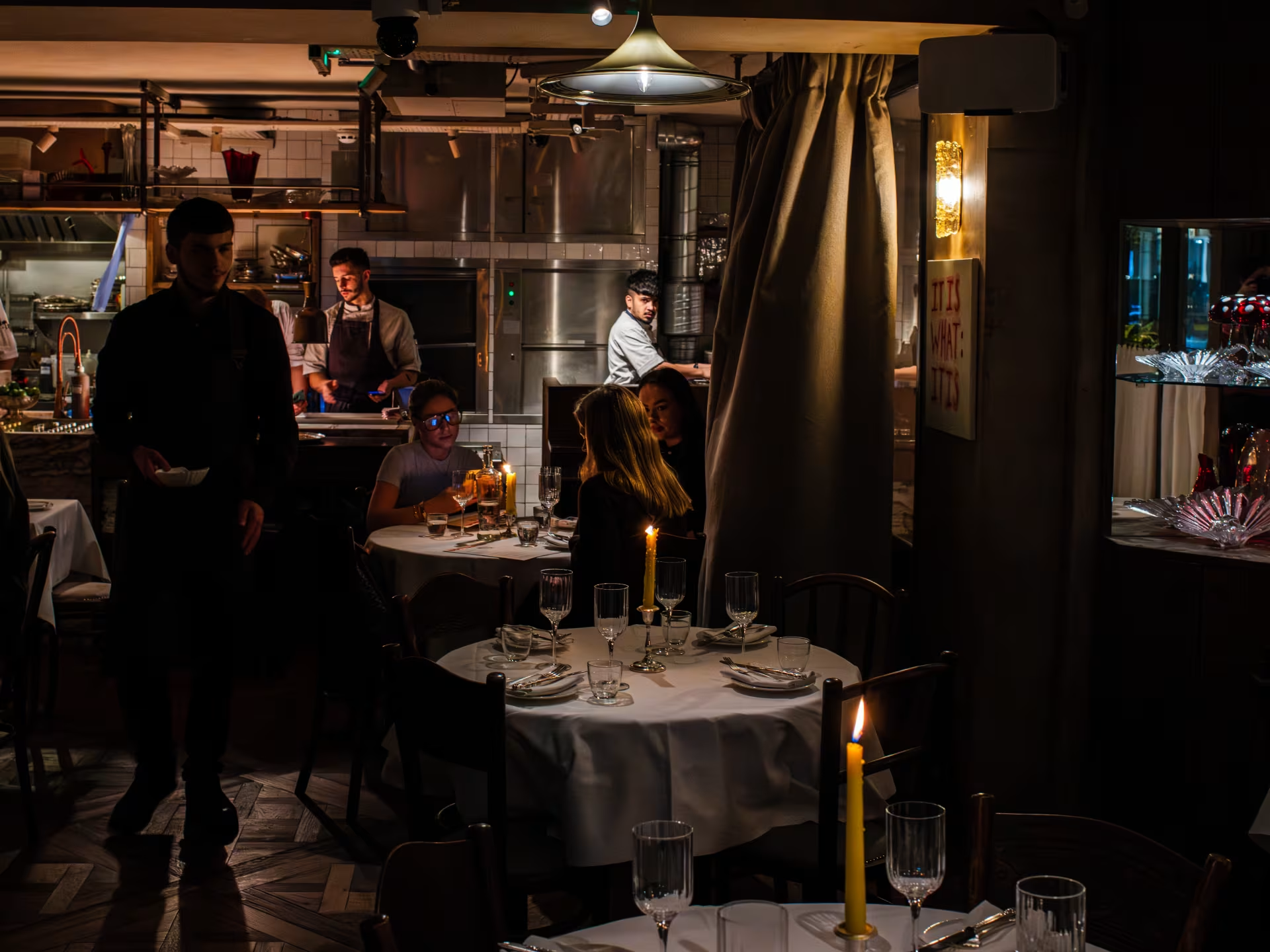
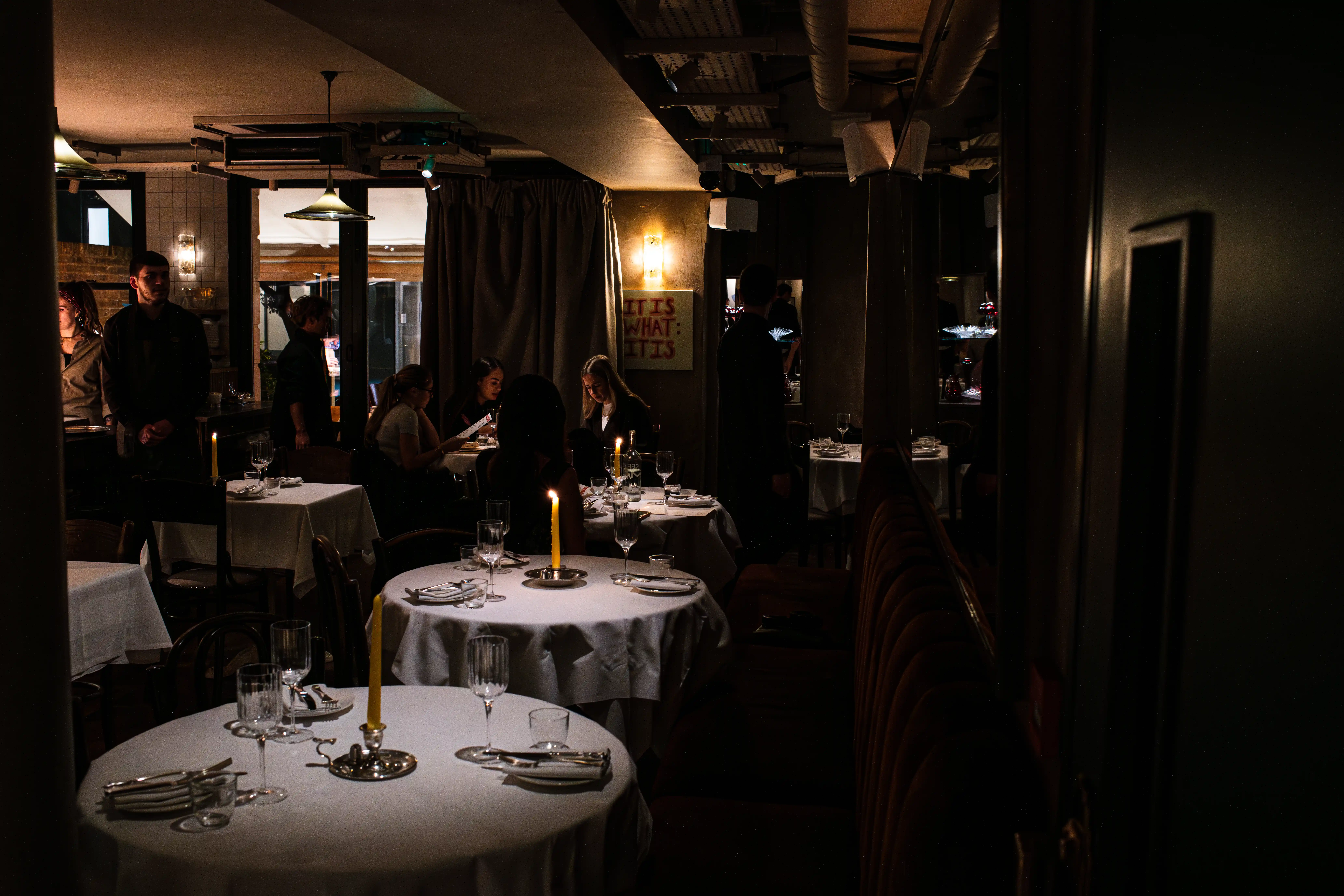

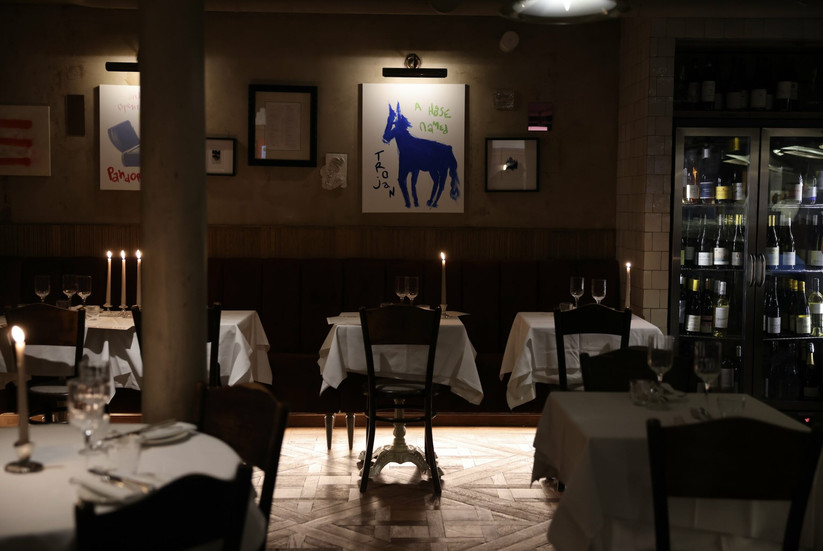


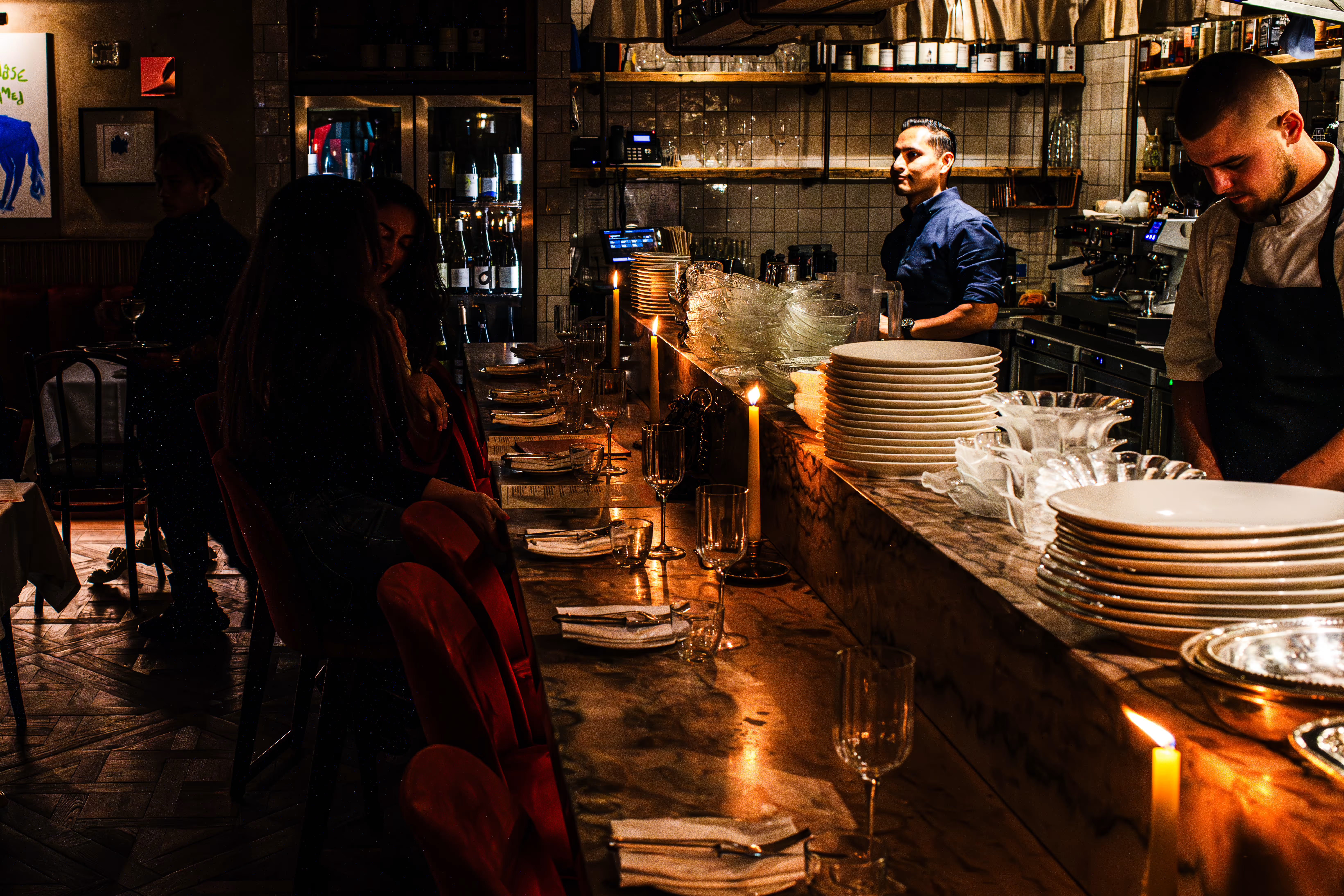

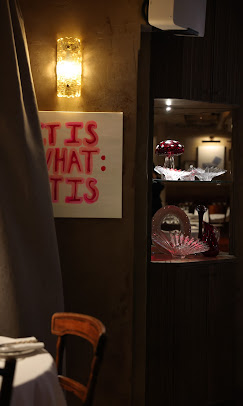

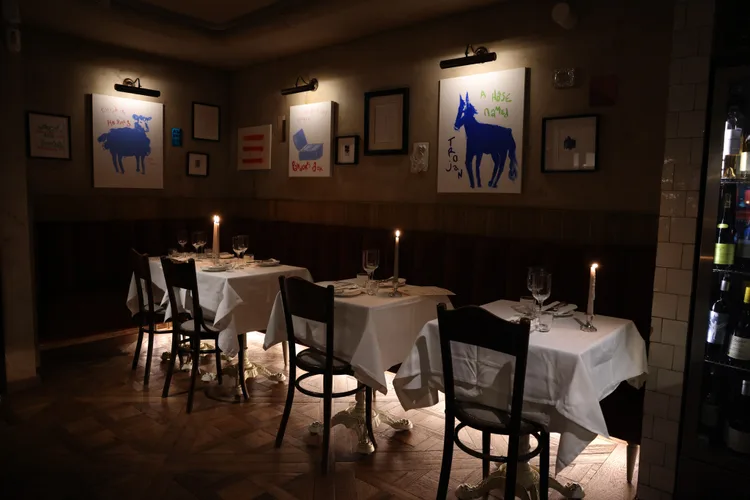
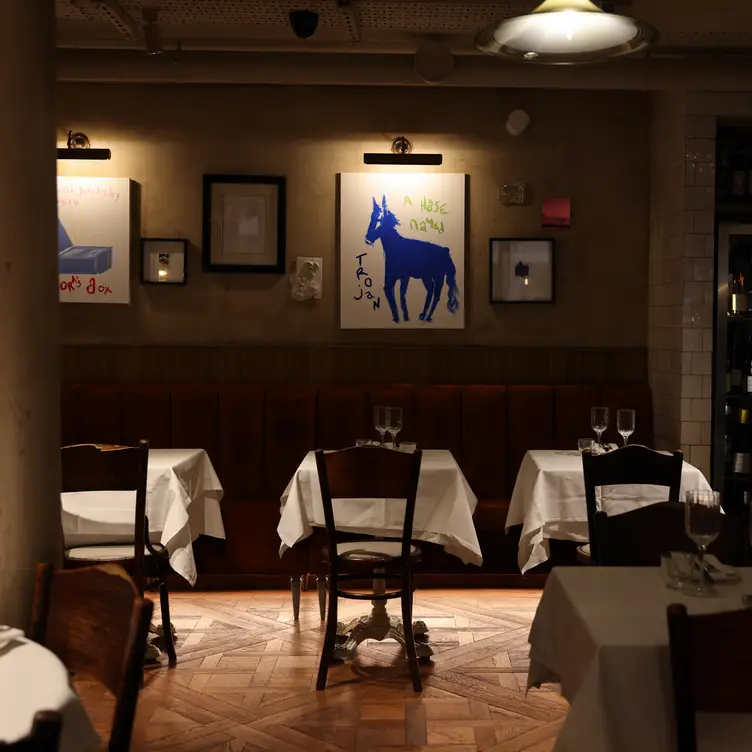



“This is atmosphere using the intangible element of time” - So beautiful!